Forged through multinational innovation, the Eurofighter Typhoon stands as a symbol of advanced air power. The Mighty Eurofighter Typhoon of European Supremacy reflects both cutting-edge technology and strategic unity. With unmatched agility, precision weapons, and future-ready upgrades, it continues to dominate modern air combat.
More than just a fighter, it embodies the strength, speed, and engineering excellence that define Europe’s aerial superiority.
Engineering Excellence: Pushing the Limits of Aerodynamics
When the two superpowers—the USA and the USSR—were developing air-superiority fighter jets, how could the UK and other major European nations remain silent and not build their own? As a result, a program was launched in the late 1970s to develop a new generation of fighter jets to replace the existing fleets of Harriers, Tornados, and Jaguars, which were not originally designed for air-superiority roles. By 1979, the project became known as the European Combat Fighter (ECF) program, with a clear focus on achieving air supremacy in the 21st century.
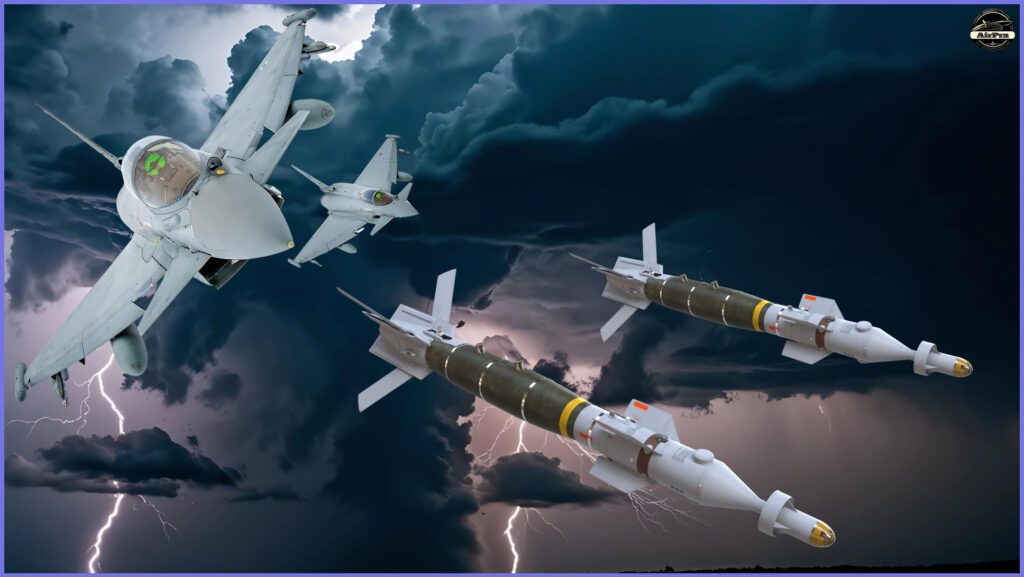
The UK initially led the program in collaboration with Germany, Italy, and Spain. Later, the French company Dassault also joined the European Combat Fighter (ECF) project. In 1983, Italy, Germany, France, the UK, and Spain launched the Future European Fighter Aircraft (FEFA) program.
However, the collaboration soon faced challenges due to disagreements over design specifications, particularly regarding air-to-ground capabilities and carrier-based compatibility. As a result, France withdrew from the program in 1985 to pursue the development of its fighter jet, the Dassault Rafale. These disagreements and setbacks led to significant delays in the overall program.
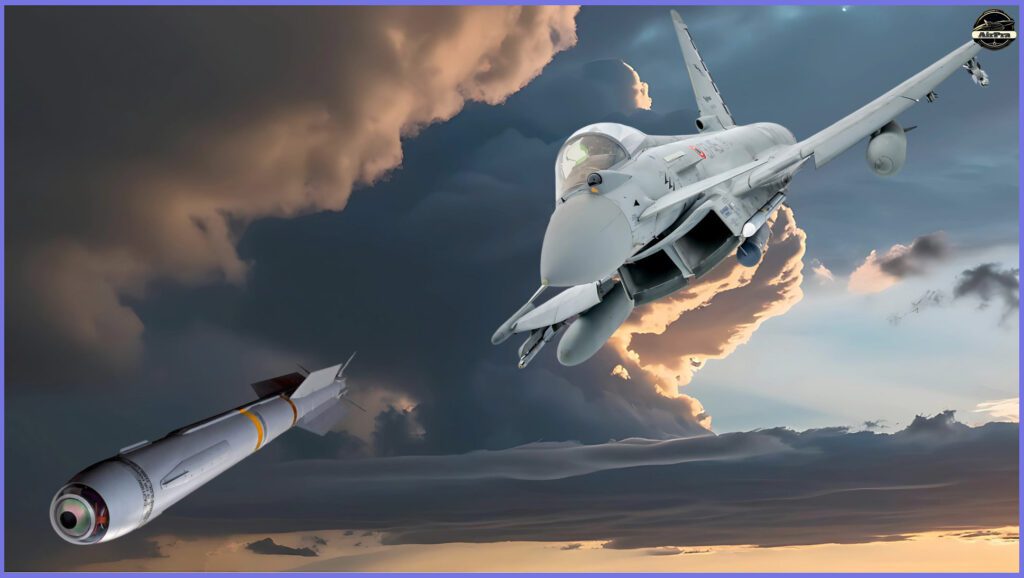
Despite all these ups and downs, and an understanding of different design parameters, the British Experimental Aircraft Programme (EAP) never stopped. The remaining partners consolidated their efforts under the Eurofighter GmbH consortium, and the prototype of the EAP finally flew in 1986.
The Eurofighter Typhoon stands as one of the most advanced multirole fighters of the 21st century, developed jointly by the UK, Germany, Italy, and Spain. Its production prototype first flew in 1994, with operational service beginning in 2003. Designed for exceptional agility and close-combat dominance, the Typhoon has reportedly even scored simulated “kills” against F-22 Raptors in dogfights.
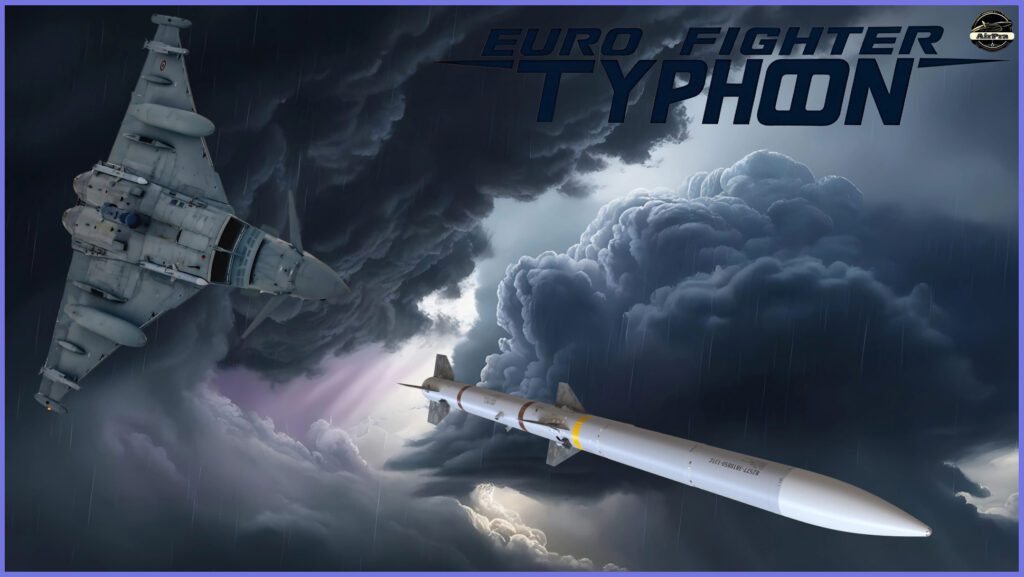
The aircraft is manufactured by a consortium comprising Airbus Defence and Space (46%), BAE Systems (33%), and Leonardo (21%), which conducts the project through a joint holding company, Eurofighter Jagdflugzeug GmbH. Additionally, the Typhoon’s engine is designed and manufactured by EuroJet Turbo GmbH, another consortium of European companies. The entire programme has its head office in Hallbergmoos, Germany.
The later production aircraft are increasingly well-equipped to undertake air-to-surface strike missions and reconnaissance. They are compatible with a growing range of armaments and equipment, including the Taurus 350, Brimstone, ASRAAM and Meteor BVR AAM.
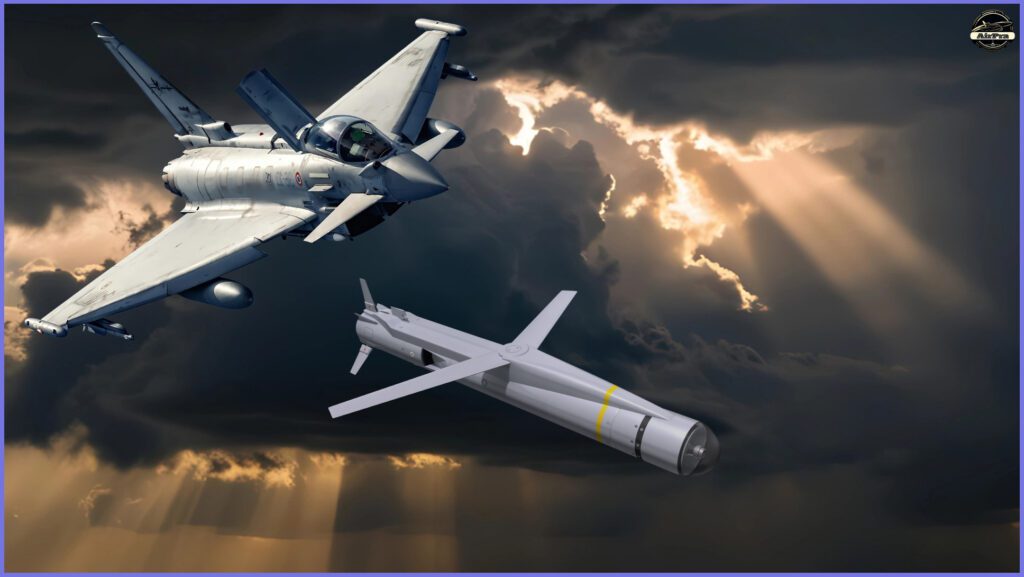
Precision Engineering: The Technologies Behind the Eurofighter Typhoon’s Success
Delta Wing Configuration with Canard: The Eurofighter Typhoon features a delta wing design, offering exceptional manoeuvrability at both low and supersonic speeds. It uses a quadruplex digital fly-by-wire system that provides artificial stability and is often called “carefree” because it prevents pilots from exceeding the aircraft’s manoeuvring limits.
The Typhoon also incorporates forward canard wings, angled at about 45 degrees, which boost lift and agility, allowing for tighter turns and greater control in high-demand scenarios.
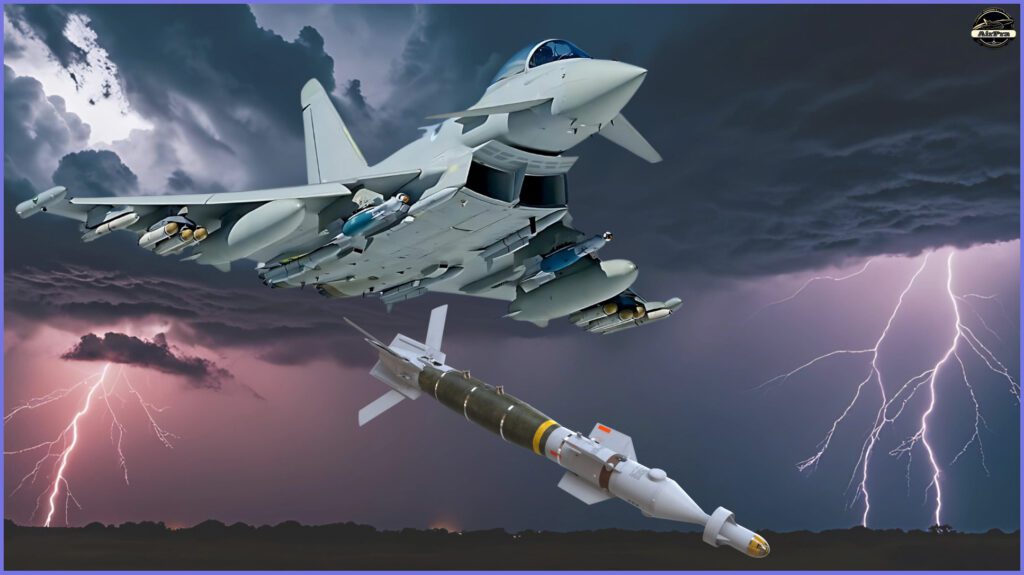
Advanced Avionics: The Eurofighter Typhoon is equipped with cutting-edge avionics, including the Euroradar Captor radar—a multi-mode pulse-Doppler system enhanced by upgrades like R2P and T2Q for better air-to-air performance. Its AESA version, the Captor-E, significantly boosts tracking range and can reportedly detect an F-35 at around 59 km. For passive detection, it uses the PIRATE IRST system, mounted on the forward-left fuselage, capable of spotting heat signatures and tracking up to 200 targets in various modes.
The Eurofighter Typhoon is equipped with the Praetorian Defensive Aids Sub-System (DASS), which automatically detects and counters air and surface threats. It includes radar, missile, and laser warning systems, along with countermeasures like chaff, flares, ECM, and a towed radar decoy.
The jet also features a TERPROM-based ground proximity warning system and uses the MIDS Link 16 data link to receive real-time information from external sources like AWACS.
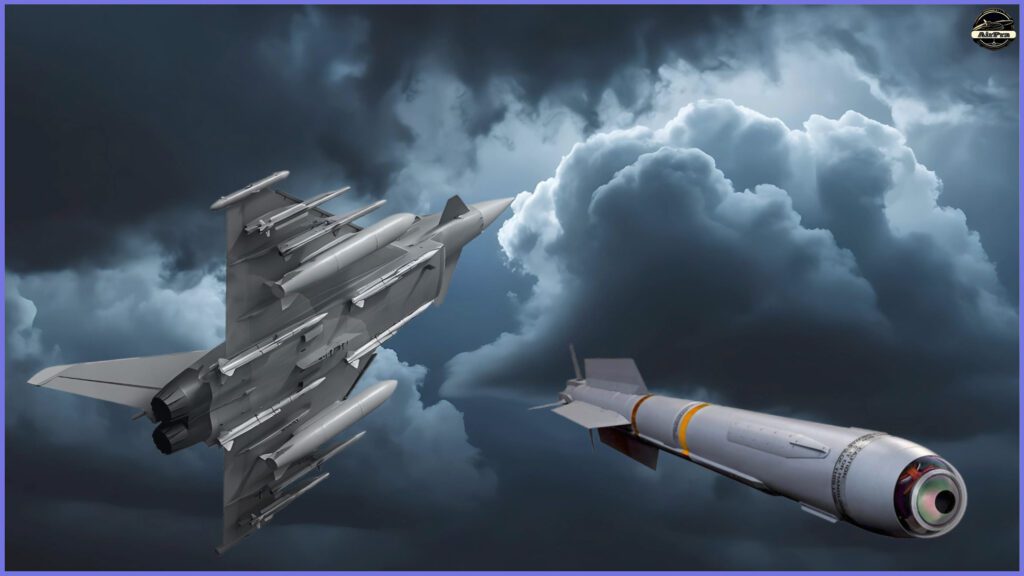
Advanced Cockpit with Helmet-Mounted Display System: User input played a key role in shaping the Typhoon’s cockpit, with a strong focus on layout and functionality. Military pilot feedback and dedicated testing guided its development. The result is a modern glass cockpit, entirely free of traditional analogue instruments.
It includes three full-colour multi-function displays (MHDDs), a wide-angle HUD with FLIR capability, a voice-activated hands-on throttle and stick (Voice+HOTAS), a Helmet Mounted Symbology System (HMSS), the MIDS data link, a manual data-entry panel on the left glare shield, and an integrated warning system with a dedicated panel (DWP).
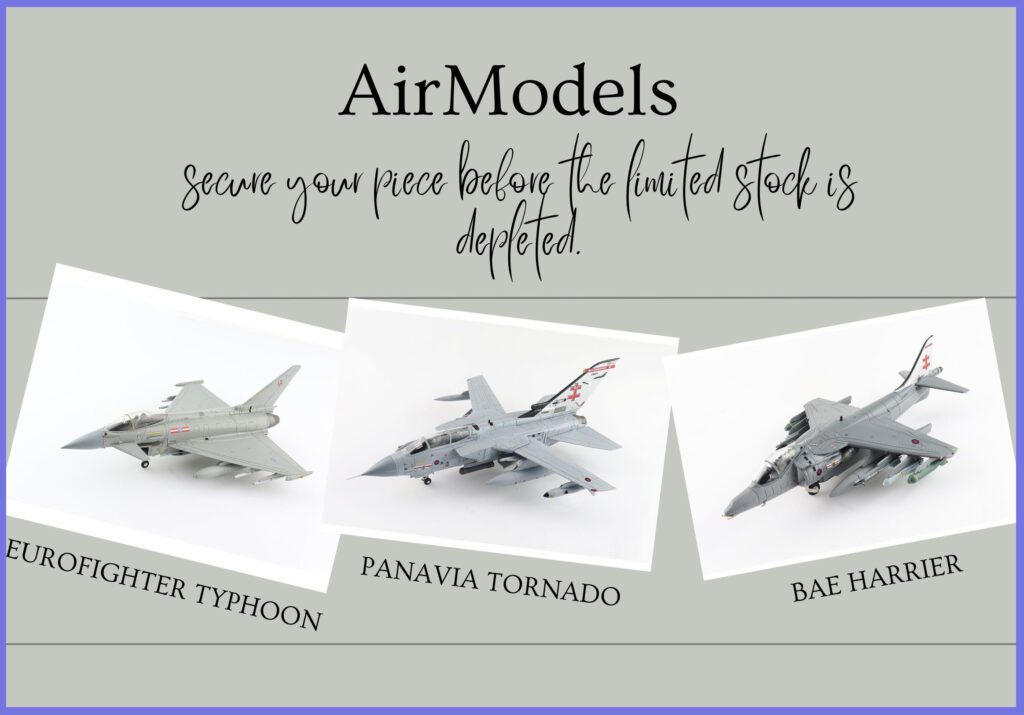
The Typhoon is controlled via a centre stick and left-hand throttles, following the HOTAS (Hands On Throttle and Stick) principle to reduce pilot workload. In emergencies, it features a Martin-Baker Mk 16A ejection seat, with canopy jettison enabled by two rocket motors. A helmet-mounted display system allows pilots to see vital flight and targeting data directly on the visor, improving situational awareness and target engagement.
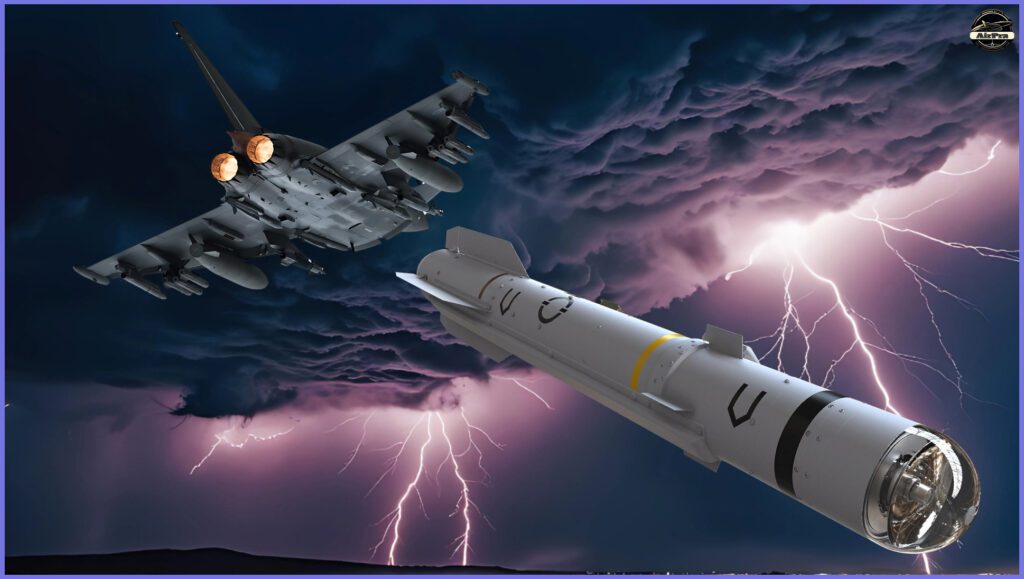
Eurojet EJ200 Engines: The Eurofighter Typhoon relies on a pair of Eurojet EJ200 engines that provide a powerful blend of speed and efficiency. Each engine generates around 60 kilonewtons (kN) of thrust in normal operation, increasing to over 90 kN with afterburners. In high-performance “war” mode, the engines can push up to 69 kN dry and 95 kN with afterburners, offering a notable boost in combat readiness.
In extreme situations, the engines can safely sustain up to 102 kN of thrust each for a few seconds without causing damage to core components, enabling the aircraft to overcome critical scenarios. Additionally, the Typhoon’s engines are capable of achieving supercruise at Mach 1.5 without the need for afterburners.
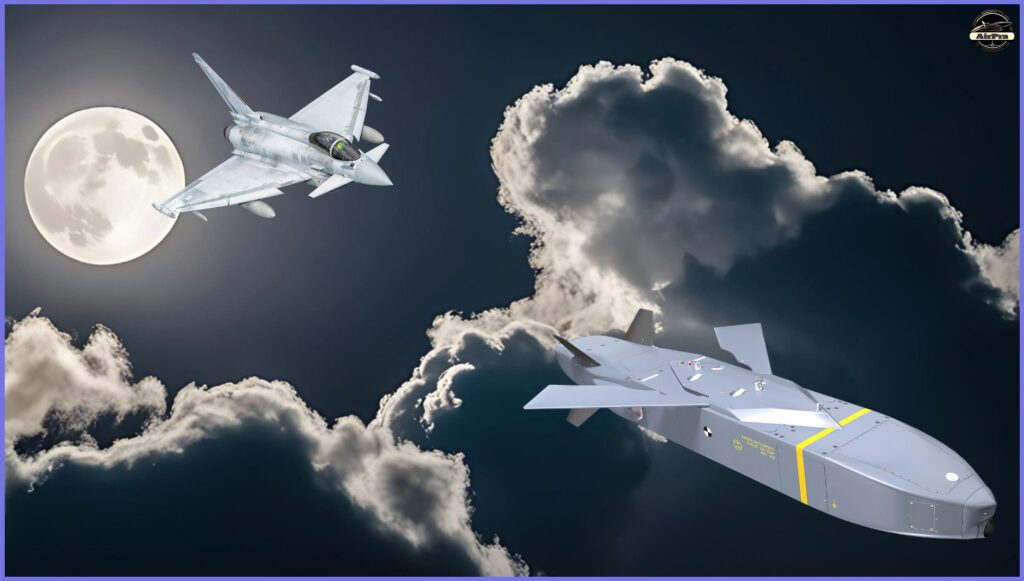
Versatile Weapons for Multirole Missions: The Eurofighter Typhoon boasts 13 hardpoints to carry a wide range of air-to-air and air-to-ground weapons, making it highly effective in both air superiority and strike roles.
In air-to-ground operations, the Typhoon can deploy Paveway II/III/IV laser-guided bombs, the Brimstone for pinpoint strikes against armoured targets, and the Storm Shadow cruise missile for long-range, deep-penetration missions. It can also deploy the Taurus KEPD 350 for high-value targets and the Small Diameter Bomb for enhanced payload capacity. Additionally, it is capable of using JDAM, with the integration of SPEAR 3 planned for the near future.
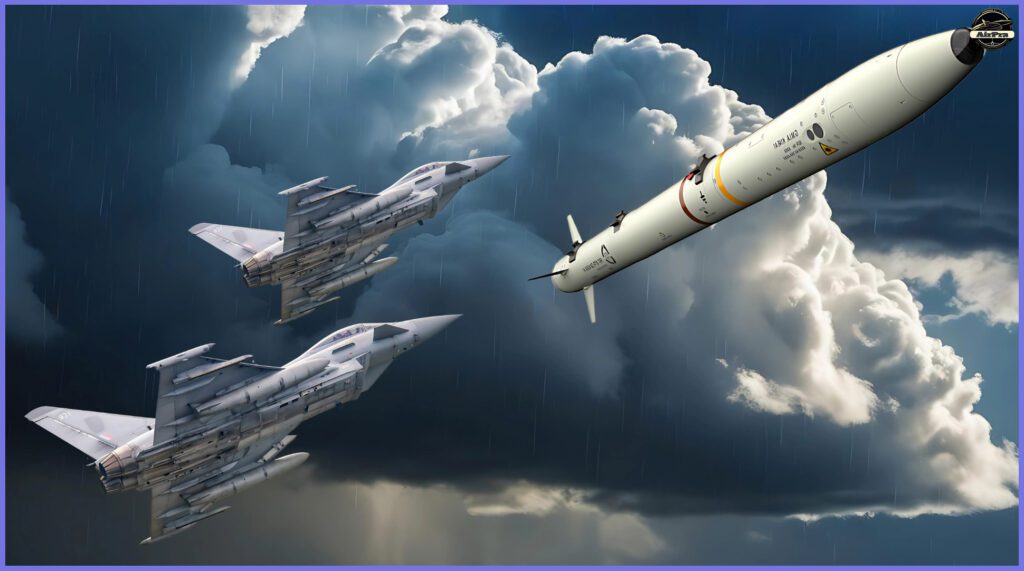
In air-to-air operations, the Eurofighter Typhoon employs a comprehensive suite of weapons. For beyond-visual-range engagements, it uses the AIM-120 AMRAAM and the MBDA Meteor, both of which offer superior range and precision.
In close combat, it deploys the IRIS-T, AIM-9 Sidewinder, and ASRAAM, all of which provide exceptional agility and heat-seeking capabilities for dogfighting scenarios. Additionally, the Typhoon is equipped with a Mauser BK-27 autocannon, which is suitable for short-range encounters.
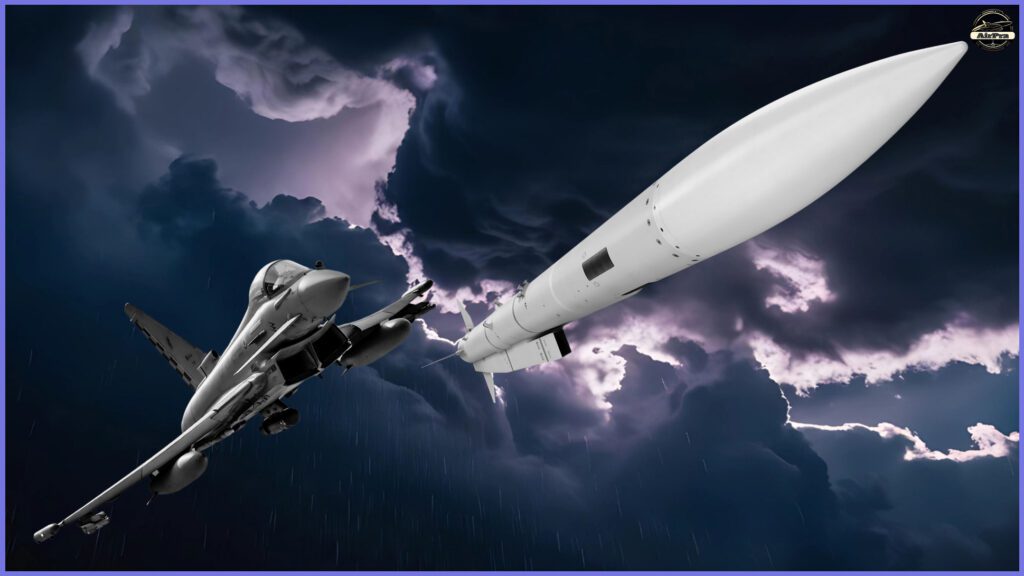
Built to Dominate: Eurofighter Typhoon’s Specs & Systems
The Eurofighter Typhoon is available in both single-seat and two-seat configurations, depending on operational requirements. It measures 52 feet 4 inches (15.96 meters) in length and stands 17 feet 4 inches (5.28 meters) tall. With a wingspan of 35 feet 11 inches (10.95 meters) and a wing area of 551 square feet (51.2 square meters), the Typhoon is designed for optimal aerodynamic performance, combining compact dimensions with a broad lifting surface for superior agility and control.
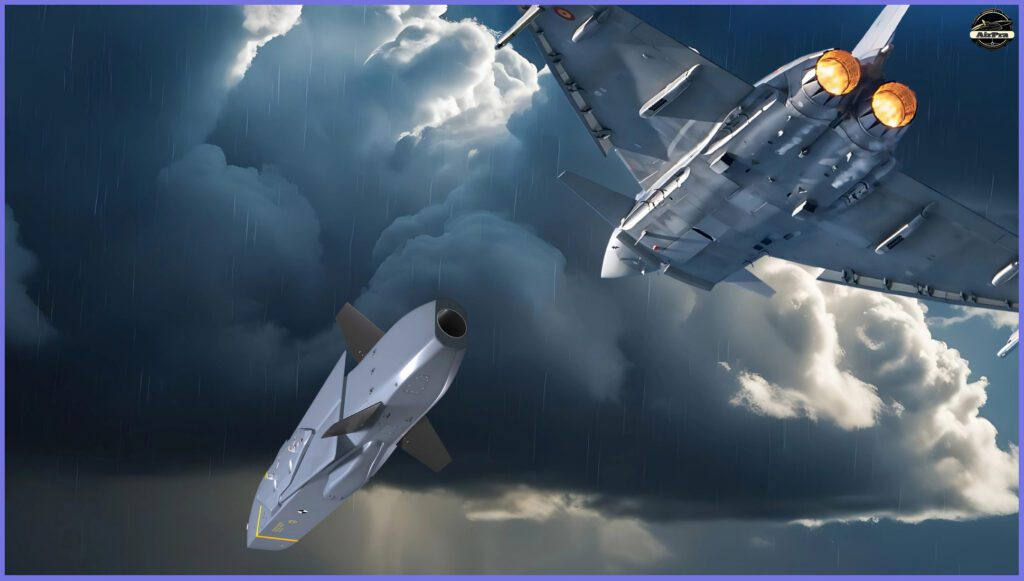
The Eurofighter Typhoon has an empty weight of around 11,000 kg (24,251 lb) and a typical gross weight of 16,000 kg (35,274 lb). It can take off at a maximum weight of 23,500 kg (51,809 lb), allowing for a versatile combat load.
The aircraft holds approximately 4,996 kg (11,010 lb) of internal fuel. Propulsion comes from two Eurojet EJ200 afterburning turbofan engines, delivering a high thrust-to-weight ratio and excellent performance in both air-to-air and air-to-ground roles.

It can carry up to 9,000 kg (19,800 lb) of weapons across its 13 hardpoints. It reaches a top speed of 2,500 km/h (Mach 2.35) at altitude and up to 1,530 km/h (Mach 1.25) at sea level. Capable of supercruise, it can sustain speeds around Mach 1.5 without afterburners.
The aircraft has a maximum combat radius of approximately 1,389 km and can operate at altitudes up to 65,000 feet (19,812 m). With a rate of climb of 315 meters per second and g-limits ranging from +9 to -3, the Typhoon is built for high-performance manoeuvring in demanding combat scenarios.
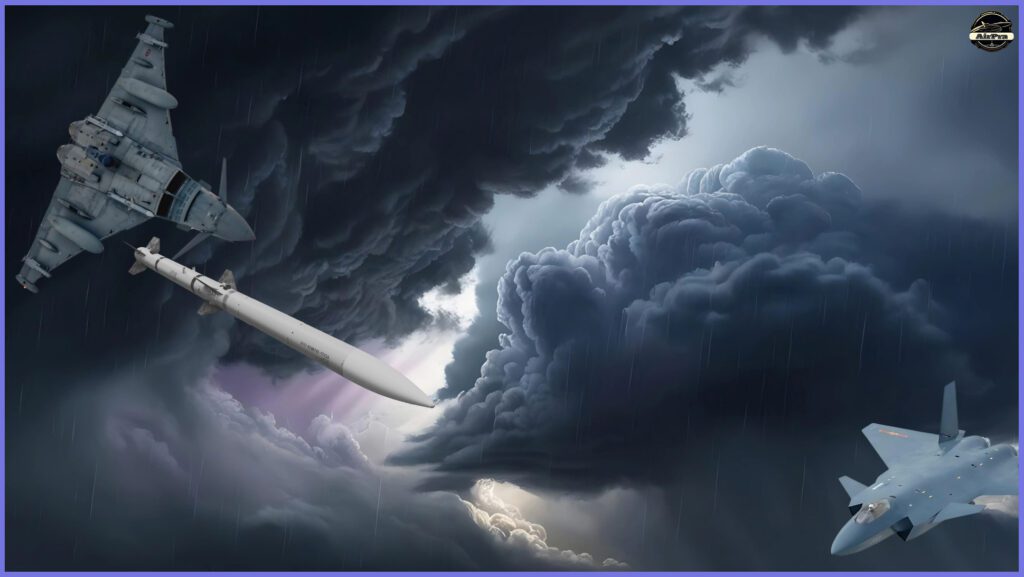
A Quick Message to Our Readers
Some details in our articles may change over time. For the most accurate and current information, we encourage you to check reliable and updated sources.
We’re passionate about bringing you trusted insights on military systems and global developments. Your support helps us continue this work. When you buy through our affiliate links, you’re helping us grow while getting quality products in return.
Your thoughts matter to us. If there’s a topic or defence system you’d like to learn more about, let us know in the comments—we’ll do our best to cover it.
Thank you for being part of our journey. We appreciate your time and interest—happy reading!
